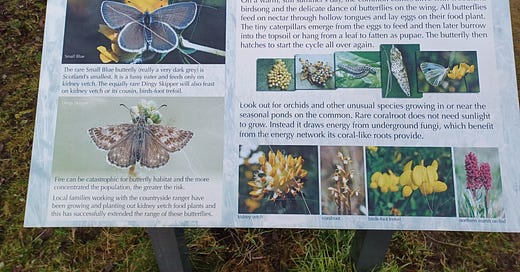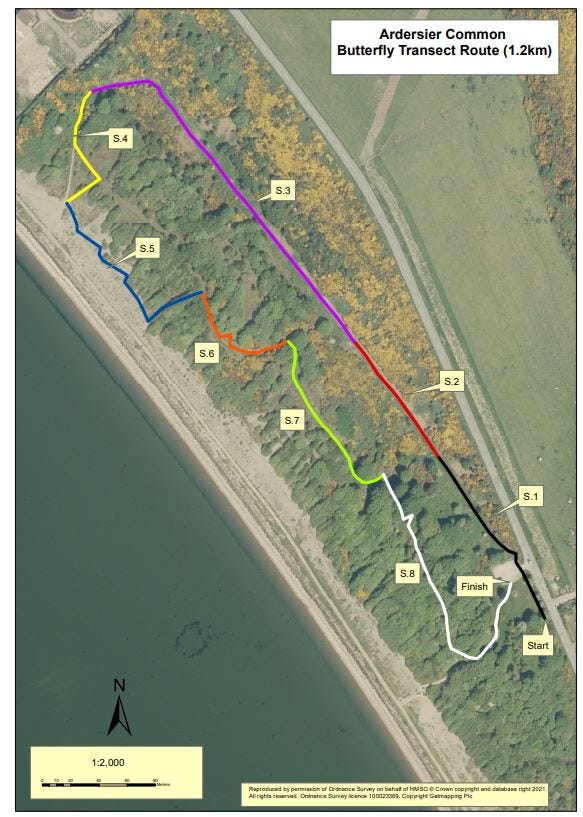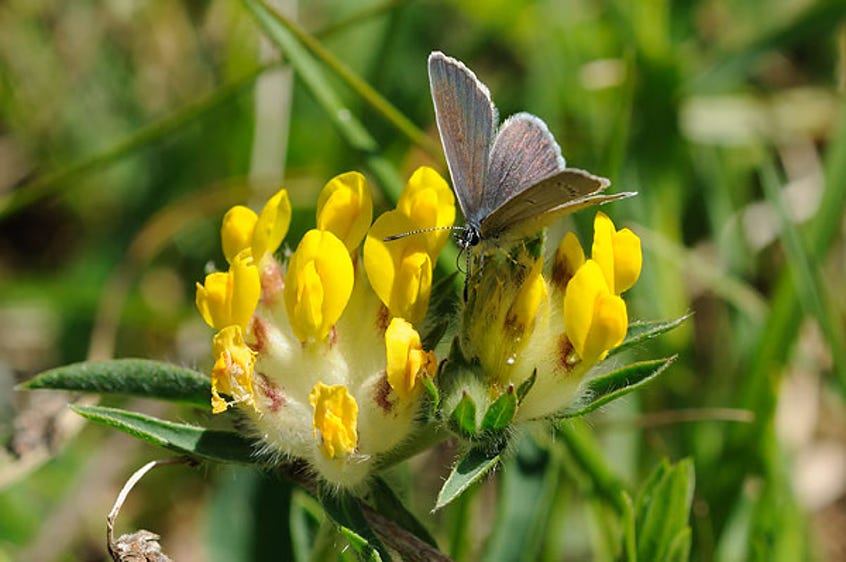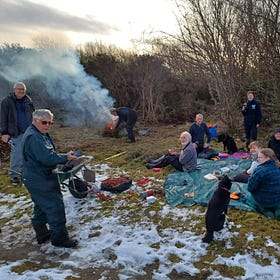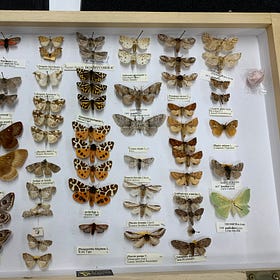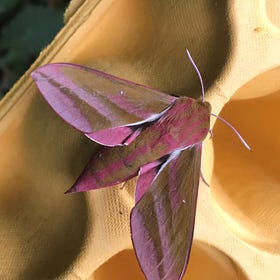Invited! Butterfly Monitoring Volunteers for Ardersier Common
John's call to action for conservation
Dear Friends and Nature Enthusiasts,
Firstly, I extend my heartfelt thanks to all who were able to attend our meeting back in December and to everyone who participated in my online talk on Ardersier Common - Maintaining a Haven for Wildlife in February. It was a pleasure to meet so many passionate individuals committed to conserving our natural heritage. For those who have previously volunteered on our butterfly transects and for any newcomers eager to join this crucial conservation effort, this message is for you.
In collaboration with Tracy Munro from Species on the Edge/Butterfly Conservation, we have organized some training sessions for the 2024 Butterfly Transect at Ardersier Common, a site renowned for its remarkable beauty and biodiversity, particularly its rare butterflies and exotic orchids.
Training Details:
Online Training with Tracy Munro
- Date: Wednesday, 20th March
- Time: 6:00 - 7:30 PM
- Location: Online (Zoom)
- Focus: This session will cover how to input data on the UK Butterfly Monitoring Scheme (UKBMS) site and introduce transect methodology.
- Zoom Link: [Training Session Link] https://us02web.zoom.us/j/89147553046?pwd=RDFyR0VKbmxkZER2eldTWVpDWDE4QT09
- Meeting ID: 891 4755 3046
- Passcode: 292655
On-site Training with John Orr
- Date: Saturday, 23rd or Sunday, 24th March (TBC Weather Depending)
- Time: 2:00 - 4:00 PM
- Location: Meeting at the Ardersier Common car park
- Focus: Practical training on the transect method and butterfly identification. Participants will walk the route together.
Contact me to let me know to expect you: John.orr@highlifehighland.com
Why Volunteer?
Ardersier Common is more than just a picturesque location; it's a sanctuary that has seen the flourishing of rare botanical plants and the flutter of elusive butterflies since conservation efforts started 15 years ago. This protected area is a testament to the rich biodiversity of the Scottish Highlands, hosting some of Scotland's most rare butterflies and exotic orchids.
Your participation in monitoring these magnificent creatures is crucial. It helps us gather essential data that aids in the conservation of their habitats and ensures their survival for future generations to admire and study. There are real personal benefits to volunteering as well - knowing you are making a difference, and meeting likeminded people who care about the same things you do!
Can't Make It?
If you're unable to attend the training sessions, worry not. The online session will be recorded for your convenience, and additional on-site training dates can be arranged if necessary.
This is a call to action for all who cherish our natural world and wish to make a tangible difference. Your involvement in the Butterfly Transect at Ardersier Common is a chance to be part of a community dedicated to safeguarding one of Scotland's most precious environmental assets.
So what exactly is a butterfly transect?
A butterfly transect is a systematic method used for monitoring butterfly populations in a specific area. This method involves walking a fixed route (the transect) through a chosen habitat at regular intervals, usually weekly, during the butterfly flying season. Observers record the species and number of butterflies they see along the route. These observations contribute valuable data for assessing the health and trends of butterfly populations over time.
Key elements of a butterfly transect include:
- Fixed Route: The transect route is carefully chosen to represent the habitats within the monitoring site and is divided into sections based on different habitat types or features. This route remains the same each time the survey is conducted to ensure consistency in the data collected.
- Regular Timing: Surveys are carried out at regular intervals, typically weekly, during the butterfly season, which usually spans from early spring to late autumn, depending on the geographical location. This regularity captures variations in butterfly activity and abundance throughout the season.
- Standardised Method: Observers follow a standardised method for counting butterflies, such as walking at a steady pace and recording butterflies within a certain distance (e.g., 5 metres to the left and right of the path and 5 metres ahead). This method ensures that data is comparable across different times and places.
- Data Recording: The species and number of butterflies observed are recorded, along with environmental conditions such as weather, temperature, and wind speed, as these factors can influence butterfly activity.
Butterfly transects are a crucial tool in conservation biology. They provide long-term datasets that can help identify trends in butterfly populations, indicating the health of the environment and the impact of habitat changes, climate change, and conservation measures. This data can inform conservation strategies, help prioritize efforts to protect endangered species, and enhance habitat management practices.
Please, join us in this vital local conservation effort. Together, we can ensure the thriving future of Ardersier Common and its enchanting inhabitants.
Yours in conservation,
John Orr
John Orr is the High Life Highland Countryside Ranger for Inverness. Throughout his career spanning 30 years, John has demonstrated a deep commitment to environmental stewardship and education. His work has not only contributed to the preservation of Scotland's natural heritage but has also inspired many individuals to engage with and appreciate the natural world around them. His work includes developing and implementing management plans for local habitats, leading educational programmes, and working collaboratively with local communities to raise awareness of our natural world.
Butterfly Rescue Mission - Fully Underway
Despite the recent snowy weather and cold temperatures, 17 hardy volunteers turned up at Ardersier Common on Saturday to join me (John Orr) and Tracy Munro from ‘Species on the Edge’ clear back gorse bushes and birch saplings from the glades, where rare the small blue and dingy skipper butterflies are found.
Digitising the Fascinating Rosie Moth Collection
Did you know there was a moth enthusiast in Caithness in the 1950s, 60s and 70s who amassed a collection of over 900 specimens?! When I first heard this, I thought “Woah that’s amazing”, the patience and dedication required to amass such a collection is remarkable. It was an honour to be asked to organise a team of volunteers to digitalise the collection…
Misunderstood Moths
Ask most folk what they think about moths and the answers are pretty standard: “They are brown and drab” “They only fly at night” “They eat your clothes” It doesn’t take long to discover that the answer to all these points is “not always!” Moths are closely related to butterflies and both belong to the order Lepidoptera. In the UK, we have …


